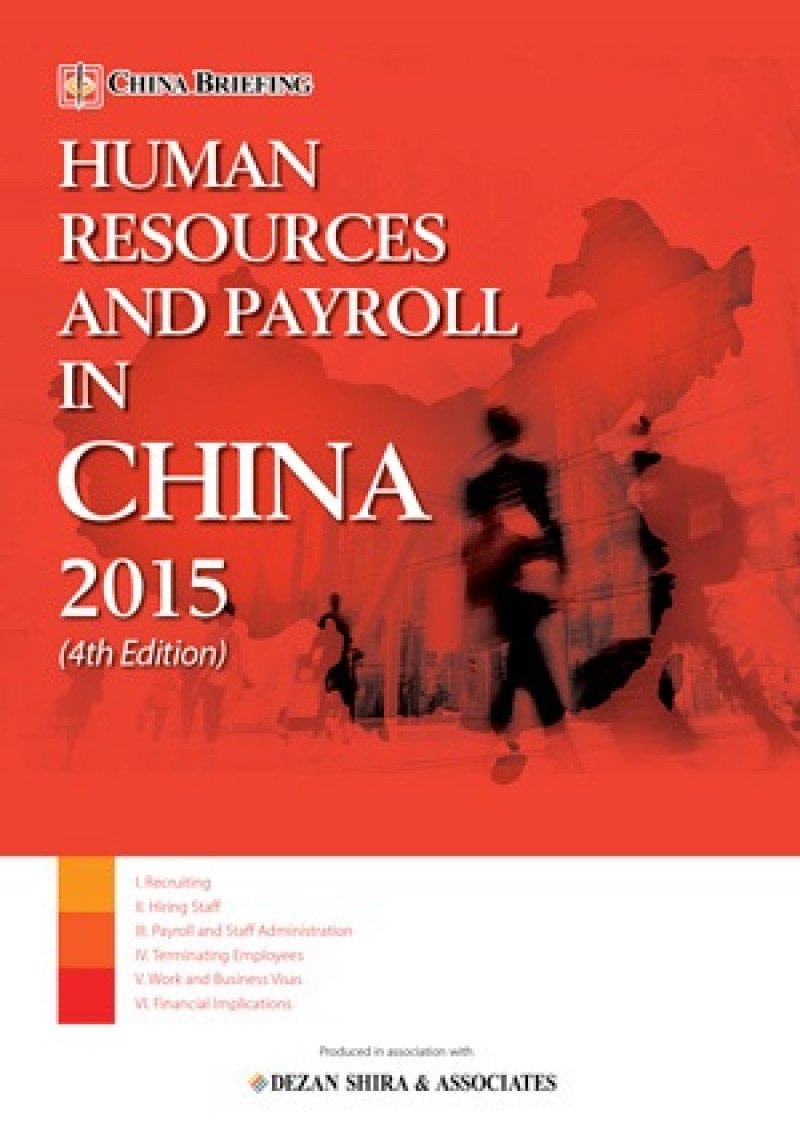R&D Pharmaceutical Professionals in China Under the Microscope
By Direct HR
Pharmaceutical companies are expanding their manufacturing and R&D facilities in China at a rate four times greater than the forecasted investment for the United States during 2015 – 2022. This has caused a surging demand for R&D professionals in China from both local and global pharma companies and CROs that are actively hiring.
In this article, we detail the results of our analysis on China’s pharmaceutical industry, focusing on R&D professionals rather than organizations whose sole activity gravitates around medical devices. We have analyzed over 2.100 resumes from professionals at 44 companies both from China-based organizations (66.5 percent) and global pharma players (33.5 percent).
Key Take-Aways
Finding #1:
The talent pool of R&D professionals for the pharmaceutical industry in China concentrates fundamentally along the Yangtze River delta: 70.3 percent of the professionals analyzed are located there, with the key location being Shanghai (57.4 percent).
However, important differences emerge between the location strategies of local pharmaceutical companies and foreign, non-Chinese, based organizations. Whereas the former are predominantly located in Shanghai (67.4 percent), the latter mostly split their R&D operations between Shanghai (37.6 percent) and Beijing (31.5 percent).
Finding #2:
R&D talents at non-Chinese based firms have, on average, more working experience (7y 2m) than their colleagues at Chinese firms (5y 7m). This is mostly due to the fact that Chinese firms are betting more intensively on young talent (less than four years of working experience) and only 17.0 percent of the R&D functions there are held by professionals with more than eight years working experience.
Organizations looking for R&D professionals should bear in mind that, on average, they will remain for about 2y 10m before moving to another employer; for managers, this is significantly higher (about 4y 4m). 82.5 percent of the professionals analyzed remain less than four years per employer (63.6 percent for managers).
Finding #3:
Finally, Chinese firms seem to have a better grasp on the talent supply landscape for R&D professionals in China. The distribution of their job openings matches the supply better than openings coming from non-Chinese based firms.
 RELATED: Human Resource Services from Dezan Shira & Associates
RELATED: Human Resource Services from Dezan Shira & Associates
At First Glance
R&D professionals are on average 32.8 years old. They are predominantly male (62.8 percent) and, as level of seniority increases, this gender unbalance becomes more acute: about 70.5 percent of managers are men. Men tend to have slightly more work experience and are generally older: 68.0 vs. 76.5 months of working experience; 32.2 years old vs. 33.2.
Pharma R&D talent has an average work experience of 73.8 months, which is roughly six years and two months, and an employment stability of 33.8 months (about 2y 9m). For managerial positions, R&D professionals have on average 117.8 months (about 9y 9m) of working experience and are 37.6 years old.
Young professionals (those with less than four years of working experience) represent 30.8 percent, whereas senior professionals (eight years and above) are 22.8 percent.
The Yangtze River delta (Shanghai, Nanjing, Suzhou) account for 70.3 percent of the professionals; the Bohai economic rim – which surrounds Beijing and Tianjin – adds up to 15.8 percent; and the Pearl River delta in the south (Guangzhou, Shenzhen) makes for 3.3 percent.
Noteworthy are the cases of Beijing and Shanghai: the latter holds the lion’s share with 57.4 percent of all R&D professionals, while Beijing follows with 14.9 percent. Behind those come Jiangsu (8.5 percent), Guangdong (3.5 percent) and Tianjin (3.1 percent).
Working Experience
Non-Chinese based players rely on more experienced staff than their local counterparts. Overall, non-Chinese R&D professionals have a total work experience of 86.2 months (about 7y 2m), in stark contrast to the 67.5 months (5y 7m) of Chinese professionals.
Young professionals represent 23.2 percent of the total R&D force in non-Chinese companies, whereas this proportion is nearly 1.5 times higher at Chinese players: 34.5 percent. The opposite is true for senior professionals: 17.1 percent in Chinese companies and double in non-Chinese ones (34.3 percent).
All things considered, there are no significant differences in overall employment stability between Chinese and non-Chinese based players. If any, the former presents slightly superior employment stability: 34.1 versus 33.2 months. Furthermore, for every level of seniority measured, Chinese organizations yield better – if just slightly – employment stability figures.
Managers are relatively less stable in non-Chinese companies – 51.8 months per employer and 71.9 percent of them moving before 4 years – but more seasoned: on average, 130.7 months of working experience and 39.9 years old. Managers at Chinese companies are younger (36.3 years old) and less experienced (110.3 months) but relatively more stable (52.8 months, with 58.9 percent remaining less than 4 years per employer).
Geographical Location of R&D Talent
Interesting differences can be observed between Chinese and non-Chinese organizations when looking at their respective talent distribution.
Non-Chinese pharma companies have a less prominent presence in the Yangtze River: 52.1 percent vs. 79.5 percent at local companies. This is due to their relatively lower presence in Shanghai, where they concentrate “only” 37.6 percent of their R&D talent, compared to the 67.4 percent of Chinese organizations.
In fact, non-Chinese pharmaceutical companies’ talent is almost as present in Beijing as in Shanghai (31.5 and 37.6 percent, respectively) while Chinese organizations’ talent is, in comparison, practically dismissing Beijing with only 6.6 percent of its R&D talent located there.
 RELATED: R&D Pharmaceutical Professionals in China Free Report
RELATED: R&D Pharmaceutical Professionals in China Free Report
Gender Balance
Non-Chinese organizations are more gender balanced than local ones: 44.3 percent vs. 33.7 percent women respectively. However, as working experience goes up in non-Chinese companies, the gender gap increases as well. Women are less likely to reach managerial responsibilities in the R&D area at non-Chinese organizations, with only 24.1 percent of women managers there as opposed to 32.1 percent at local companies.
Talent Supply and Talent Demand
We have compared the current location of R&D professionals with the distribution of job ads published by the same set of employers in 2014 in Chinese online job boards (307 job ads).
Shanghai, which accounts for 57.4 percent of the professionals, accumulated 38.8 percent of job ads in 2014; Beijing has 10.4 percent of opening opportunities while the pool of professionals there amounts for 14.9 percent of the total. As a result, filling up positions in Shanghai and Beijing should be relatively easier, since proportionally the distribution of supply is greater than demand. However, it’s important to highlight that our job-ads analysis doesn’t take into account job requirements or compensation details.
On the other hand, distribution of the demand is higher than supply at Jiangsu and Zhejiang provinces. That’s especially true in Jiangsu, where supply is almost 11 percentage points (p.p.) above talent availability: 19.2 percent vs. 8.4 percent. At Zhejiang the difference is not that significant, with demand at 4.9 percent overtaking the supply (1.9 percent).
Chinese local firms, from a geographical perspective, are doing a better job in reading the talent market, with a distribution of the demand more in line with the distribution of the supply.
Educational Background of R&D Professionals
The most common qualification for major R&D professionals is Chemical Sciences (31.7 percent). It follows Pharmacy (15.9 percent), Pharmacology (12.0 percent), Biology (9.7 percent) and Chemical Biology (8.2 percent).
Local companies rely more intensively on professionals with a Chemical Sciences background (39.2 percent) as opposed to non-Chinese (16.1 percent).
Non-Chinese organizations source less professionals coming from universities in Shanghai and Jiangsu than their Chinese peers: 31.5 percent and 37.6 percent respectively, and focus more intensively in Beijing (15.5 percent, in contrast with the 6.0 percent of Chinese) and professionals with overseas studies (11.1 percent, vs. 1.6 percent for Chinese)
Another interesting insight comes when comparing where R&D professionals studied and their current location, with Shanghai and Beijing being net importers of university graduates. Only 28 percent of the professionals in Shanghai have studied there – the rest come mostly from neighboring provinces Jiangsu (15.5 percent) and Zhejiang (3.3 percent). When it comes to Beijing, 33.2 percent of the professionals have studied there, followed by Liaoning (10.0 percent), Tianjin (4.5 percent) and Hebei (4.2 percent).
|
Direct HR is a Top 10 China-focused recruitment firm servicing over 500 foreign and Chinese clients through offices in Shanghai, Beijing, Shenzhen and Ningbo. Direct HR specializes in the follow practicing areas: Engineering and Operations, Sales and Marketing, Finance and Accounting and Human Resources. For further information, visit www.directhr.cn or contact contact@chinarecruitment.com. |
![]()
 Human Resources and Payroll in China 2015
Human Resources and Payroll in China 2015
This edition of Human Resources and Payroll in China, updated for 2015, provides a firm understanding of China’s laws and regulations related to human resources and payroll management – essential information for foreign investors looking to establish or already running a foreign-invested entity in China, local managers, and HR professionals needing to explain complex points of China’s labor policies.
 Employing Foreign Nationals in China
Employing Foreign Nationals in China
In this issue of China Briefing, we have set out to produce a guide to employing foreign nationals in China, from the initial step of applying for work visas, to more advanced subjects such as determining IIT liability and optimizing employee income packages for tax efficiency. Lastly, recognizing that few foreigners immigrate to China on a permanent basis, we provide an overview of methods for remitting RMB abroad.
 Adapting Your China WFOE to Service China’s Consumers
Adapting Your China WFOE to Service China’s Consumers
In this issue of China Briefing Magazine, we look at the challenges posed to manufacturers amidst China’s rising labor costs and stricter environmental regulations. Manufacturing WFOEs in China should adapt by expanding their business scope to include distribution and determine suitable supply chain solutions. In this regard, we will take a look at the opportunities in China’s domestic consumer market and forecast the sectors that are set to boom in the coming years.
- Previous Article Z and M Visa Issues: Seven Things to be Aware of When Employing Foreign Staff in China
- Next Article China Announces 2016 Official Holiday Schedule



























